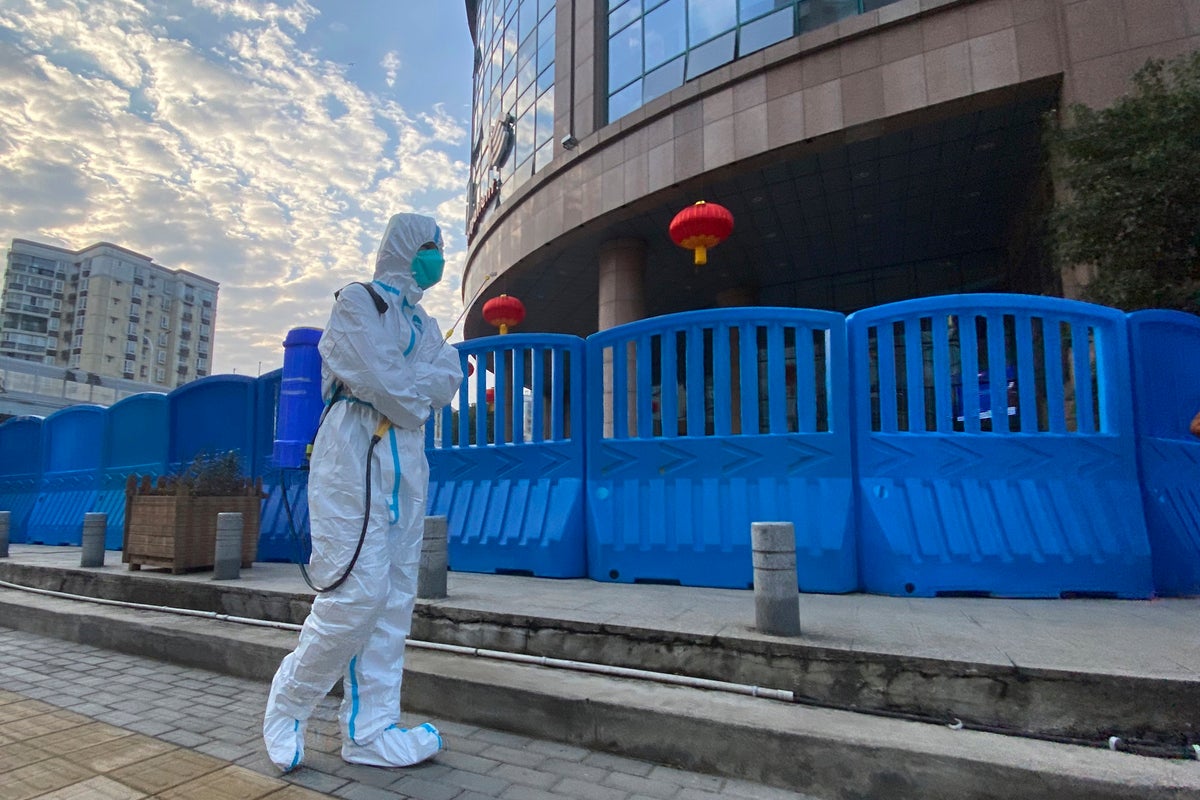
Scientists have provided more evidence to substantiate the theory that the Huanan market in Wuhan, China, was the early epicentre of the Covid-19 pandemic, finding other alternative scenarios “unlikely.”
Since the origin of the pandemic in December 2019, researchers across the globe have tried to ascertain the likely source of the novel coronavirus that has so far claimed over 6.4 million lives.
Last month, an expert group drafted by the World Health Organization (WHO) to help investigate the origins of the pandemic said further studies were needed to determine how Covid first began, including a more detailed analysis of the possibility it was a laboratory accident.
Now, two studies published on Tuesday in the journal Science, trace the start of the pandemic to the market in Wuhan, where foxes, raccoon dogs and other live mammals susceptible to the virus were sold live immediately before the pandemic began.
The findings of the studies were reported as pre-prints in February, and have passed peer-review to be published in the journal.
In the research, scientists, led by virus evolution expert Michael Worobey from the University of Arizona in the US, conclude that the Sars-CoV-2 virus first spread to humans from animals likely in two separate transmission events in the Huanan market in late November 2019.
One of the studies assessed the locations of the first known human Covid-19 cases, as well as swab samples taken from surfaces at various locations at the market.
It examined the geographic pattern of Covid-19 cases in December 2019 – the first month of the outbreak.
In the research, scientists could determine the locations of almost all of the 174 cases identified by the WHO that month, 155 of which were in Wuhan.
Findings revealed that these cases were clustered tightly around the Huanan market, whereas later cases were dispersed widely throughout the city, home to over 11 million people.
Scientists found a striking percentage of early Covid patients with no known connection to the market – who neither worked there nor shopped there – lived near the market.
Based on these findings, researchers say the market was the epicentre of the epidemic with vendors likely getting infected first and setting off a chain of infections among community members in the surrounding area.
“In a city covering more than 3,000 square miles, the area with the highest probability of containing the home of someone who had one of the earliest Covid-19 cases in the world was an area of a few city blocks, with the Huanan market smack dab inside it,” Dr Worobey explained.
“This tells us the virus was not circulating cryptically. It really originated at that market and spread out from there,” Dr Worobey said.
To rule out any bias, researchers began removing cases from their analyses, going farther in distance from the market as they went, and ran the stats again.
They found that even when two-thirds of cases were removed, the findings were the same.
“Even in that scenario, with the majority of cases, removed, we found that the remaining ones lived closer to the market than what would be expected if there was no geographical correlation between these earliest Covid cases and the market,” Dr Worobey said.
In swab samples taken from surfaces like floors and cages of the Huanan market after it was shuttered, that tested positive for the Sars-CoV-2 virus, were significantly associated with stalls selling live wildlife, the study found.
Mammals now known to be susceptible to SARS-CoV-2, including red foxes, hog badgers and raccoon dogs, were sold live at the Huanan market in the weeks preceding the first recorded Covid-19, researchers say.
With a detailed map of the market, researchers showed that virus-positive samples reported by Chinese researchers in early 2020 showed a clear association with the western portion of the market, where live or freshly butchered animals were sold in late 2019.
“Our analyses of available evidence clearly suggest that the pandemic arose from initial human infections from animals for sale at the Huanan Seafood Wholesale Market in late November 2019,” Kristian Andersen, another co-author of the study from Scripps Research Institute in the US, said.
The other study looked at genomic sequences of the novel coronavirus from samples collected from Covid-19 patients during the first weeks of the pandemic in China.
Researchers combined epidemic modeling with analyses of the virus’s early evolution based on the earliest sampled genomes.
They found that the pandemic, which initially involved two subtly distinct lineages of Sars-CoV-2, likely arose from at least two separate infections of humans from animals at the Huanan market in November 2019 and perhaps in December 2019.
This indicates there may have been many other animal-to-human transmissions of the virus at the market that failed to manifest in recorded Covid-19 cases.
The new findings suggest a scenario in which the two lineages of the coronavirus jumped from animals into humans on separate occasions, both at the Huanan market.
Citing some of the limitations of the study, researchers say while they could recover location data for most of the December-onset Covid cases identified by the WHO, they could not access the precise latitude and longitude coordinates of all these cases.
“We also lack direct evidence of an intermediate animal infected with a SARS-CoV-2 progenitor virus either at the Huanan market or at a location connected to its supply chain, like a farm,” they wrote.
“Additionally, no line list of early Covid-19 cases is available and we do not have complete details of environmental sampling,” the authors added.
In further research, the authors say scientists and public officials should seek a better understanding of the wildlife trade in China and elsewhere and promote more comprehensive testing of live animals sold in markets to lower the risk of future pandemics.







